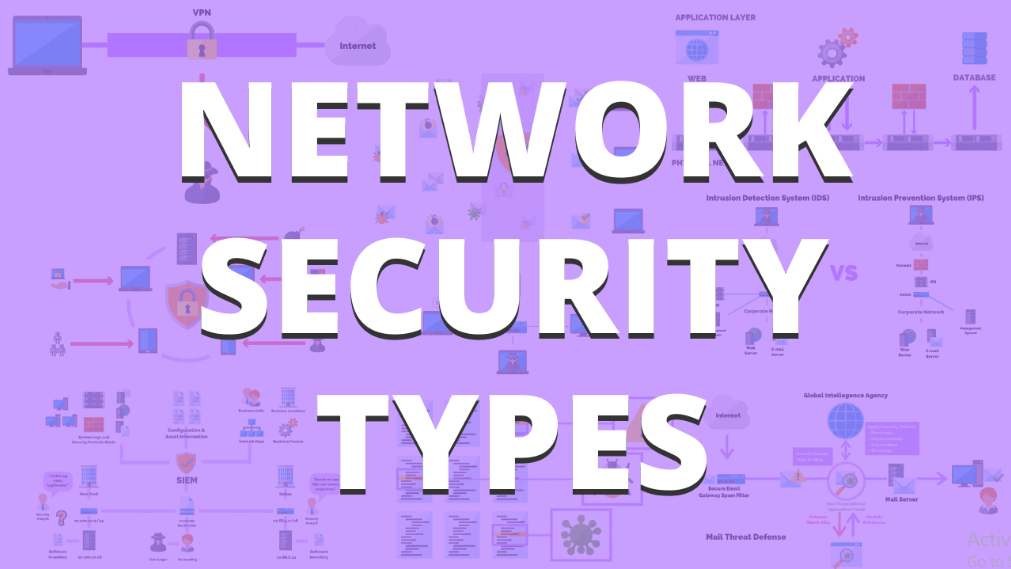What is network security and benefits?

Cyber security is an important area in the information and communications technology (ICT) industry. It is concerned with protecting computer systems, data, and information from attacks, unauthorized access, and internet fraud.
Cyber security issues include:
1. System and network security: Includes the implementation of security measures such as firewalls, anti-virus software, system updates, data encryption, and access control.
2. Cyber attack prevention: This includes using software and techniques to detect and prevent types of attacks such as distributed denial of service (DDoS) attacks, cyber attacks, and phishing. gland.
3. Identity and access management: Ensure that only authorized people can access systems and critical data.
4. Personal data protection and legal compliance: This is about ensuring that users’ personal information is protected and complies with data protection regulations such as GDPR (Decree on Data Protection). European Union General Data Protection).
5. Education and training: Important for users to understand cybersecurity risks and know how to protect their information.
6. Respond and recover after incidents: Have a plan to react when a cybersecurity incident occurs and restore the system quickly.
Cyber security is becoming one of the most important issues for organizations and businesses globally, especially with the increase in cyber attacks and the increasing complexity of systems. information technology system.
Technology security in network security?
Information Technology (IT) security is the process and measures taken to protect important information and data on computer systems and networks. This includes preventing unauthorized access, modification, destruction or disclosure of critical information.
Here are some common IT security measures:
1. Encrypt information: Use encryption algorithms to encrypt important information before transmitting over the network or storing on storage devices.
2. Manage access control lists: Identify and control access to system resources, data, and applications.
3. Firewall: Use firewall devices to control incoming and outgoing data flow between the internal network and the external network, preventing unwanted or malicious access.
4. Antivirus and malware software: Use antivirus software and malware detection and removal tools to prevent and remove malware from the system.
5. Periodically update the system: Implement the latest security patches and update the operating system, application software, and other system components to prevent security vulnerabilities.
6. Periodic security testing: Perform periodic security testing to detect and fix security vulnerabilities on systems and networks.
7. User education and training: Provide training to users on security risks, precautions, and safety procedures when using systems and data.
8. Data backup and recovery: Perform periodic backups of important data and establish a data recovery plan to ensure that information can be restored after incidents.
IT security measures are often deployed together to create a safe and secure environment for critical systems and data.
Computer security software?
Computer security software are applications and tools designed to protect computers and the data on them from cyber threats and malware. Here are some popular types of computer security software:
1. Antivirus software: Antivirus software helps detect, prevent and remove harmful programs such as viruses, trojans, ransomware and other malware from computers.
2. Firewall: Firewall software helps control the flow of data in and out of the computer, prevents unwanted connections and protects the computer from network attacks.
3. Anti-spam software: Anti-spam applications help prevent junk emails and other unwanted messages from reaching your inbox.
4. Browser security software: These are extensions or standalone applications that help prevent malicious websites, ad fraud, or other browser attacks.
5. Data encryption software: Provides the ability to encrypt data on hard drives, removable drives or even in specific files, helping to protect important information from access illegal.
6. Password management software: Helps securely manage and protect your passwords, including generating strong passwords and auto-filling passwords for websites and apps.
7. Malware scanners: Provides computer scanning tools to detect and remove malware, viruses, and other threats.
8. Online behavior monitoring software: Helps prevent online threats by monitoring and blocking illegal behavior on the internet.
Remember that using a combination of regularly reviewed and updated computer security software is important to protect your computer from online threats.
Forms of cyber security attacks and avoidance?
Cyber security attacks are activities aimed at computer systems, networks, data or online services to cause damage or gain control. Below are some common types of cyber security attacks:
Phishing: Fraudulent technique to obtain personal information and account information by impersonating websites, emails or messages so users can enter information.
Malware: Malicious software such as viruses, trojans, ransomware is transmitted to the target system to destroy, steal information or demand ransom.
DDoS (Distributed Denial of Service): An attack intended to overload a system, network or service by increasing traffic, making the service unavailable to legitimate users.
Man-in-the-Middle (MITM): An attacker inserts himself in the middle of information transmission between two parties to read or even modify it without permission.
SQL Injection: Attacks on databases by inserting malicious SQL statements into web application input fields to infiltrate and manipulate data.
Zero-Day Exploits: Take advantage of security vulnerabilities that system administrators are not aware of or do not have security patches to prevent.
Social Engineering: Using psychological intrusion techniques to deceive employees or users into revealing important information or performing unsafe actions.
Cross-Site Scripting (XSS): Inserting malicious code into websites to attack users when they visit that website.
Eavesdropping: Eavesdropping on information transmitted over a network using eavesdropping techniques or malware.
Typosquatting: Creating similar domain names to popular websites to trick users into entering personal information.
To protect against these attacks, organizations need to implement cybersecurity measures, update systems, use security software, train users, and maintain a strong cybersecurity policy.
